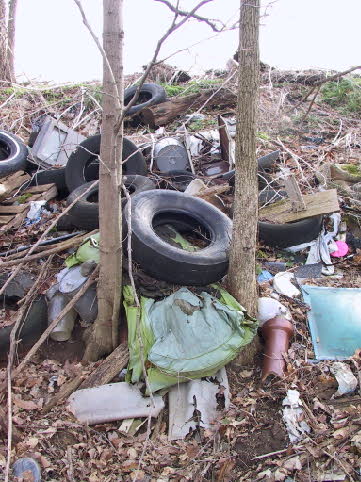Jay Walder’s Vision Of MTA’s Future
By admin on September 22, 2010
 On September 22, 2010, the New York League of Conservation Voters Education Fund (“NYLCV Education Fund”) hosted Jay Walder, Chairman of the Metropolitan Transit Authority (“MTA”), at an Eco-Partner Breakfast, a quarterly event at which leaders from around New York State meet to network and discuss issues of environmental concern. Jay Walder was nominated by Governor David A. Patterson on July 14, 2009 and confirmed as chairman and chief executive officer of the MTA on September 10, 2009. We applaud Mr. Walder for his vision and the aggressive steps that he has taken in his one year in office to keep the largest mass transit system in the United States moving in the right direction. Walder has prior experience in public transportation within the MTA, where he previously served as Chief of Staff and later as Executive Director and Chief Financial Officer. Mr. Walder left the MTA in 1995 to teach public policy at the John F. Kennedy School of Government at Harvard. Thereafter, he joined Transport for London, where he was credited with the introduction of that system’s extremely successful “Oyster card” and with leading the transportation charge as part of London’s successful bid for the 2012 Summer Olympics.
On September 22, 2010, the New York League of Conservation Voters Education Fund (“NYLCV Education Fund”) hosted Jay Walder, Chairman of the Metropolitan Transit Authority (“MTA”), at an Eco-Partner Breakfast, a quarterly event at which leaders from around New York State meet to network and discuss issues of environmental concern. Jay Walder was nominated by Governor David A. Patterson on July 14, 2009 and confirmed as chairman and chief executive officer of the MTA on September 10, 2009. We applaud Mr. Walder for his vision and the aggressive steps that he has taken in his one year in office to keep the largest mass transit system in the United States moving in the right direction. Walder has prior experience in public transportation within the MTA, where he previously served as Chief of Staff and later as Executive Director and Chief Financial Officer. Mr. Walder left the MTA in 1995 to teach public policy at the John F. Kennedy School of Government at Harvard. Thereafter, he joined Transport for London, where he was credited with the introduction of that system’s extremely successful “Oyster card” and with leading the transportation charge as part of London’s successful bid for the 2012 Summer Olympics.
Mr. Walder set the tone for the morning’s discussion by emphasizing the importance of seeking “transformational” change rather than “evolutionary” change at MTA. Mr. Walder identified two significant transformational milestones in the New York subway system. The first occurred in 1982, when the MTA’s first capital program was established. As a New Yorker, Mr. Walder recalled to mind how the New York subway system was considered a symbol of urban decay in the 1970’s, characterized by graffiti, constant breakdowns, oppressive heat in summer and ineffectual heating in winter. As a result of capital improvements, today’s subway system no longer suffers from the systemic problems of the 1970’s. He points out that there was a breakdown every 7,000 system miles in the 1970’s as compared to today when there is a breakdown only every 150,000 miles.
The second transformational milestone was the introduction of the MetroCard in 1991. As a result of the MetroCard’s introduction, tokens became relics of the past, and monthly and weekly passes and automatic bus/rail transfers became a pleasant reality. Subway ridership increased from 3.5 million riders daily in 1992 to over 5 million riders daily today. Although the MTA has been criticized for recently announced service cuts, Mr. Walder has made significant strides in his one year in office in reducing MTA’s annual operating budget. This cost-cutting initiative has resulted in the removal of 3,500 jobs, a reduction by 20% of positions at MTA HQ, reduction in overtime, consolidation of functions and renegotiation of contracts with vendors. MTA is now introducing “countdown” clocks in subway stations to remove rider angst over train delays and to make New Yorkers’ long-time habit of constantly looking over the edge of the platform toward the tunnel for the next train a thing of the past.

 On February 26, 2010, the
On February 26, 2010, the 
 Virtually everyone believes that it is good public policy to encourage the recycling of old electronic products, including computers, cathode ray tubes, televisions, printers and portable music devices. Nearly 20 states have e-waste laws on the books. However, New York City recently enacted
Virtually everyone believes that it is good public policy to encourage the recycling of old electronic products, including computers, cathode ray tubes, televisions, printers and portable music devices. Nearly 20 states have e-waste laws on the books. However, New York City recently enacted  At last night’s
At last night’s  In its precedent breaking decision in
In its precedent breaking decision in